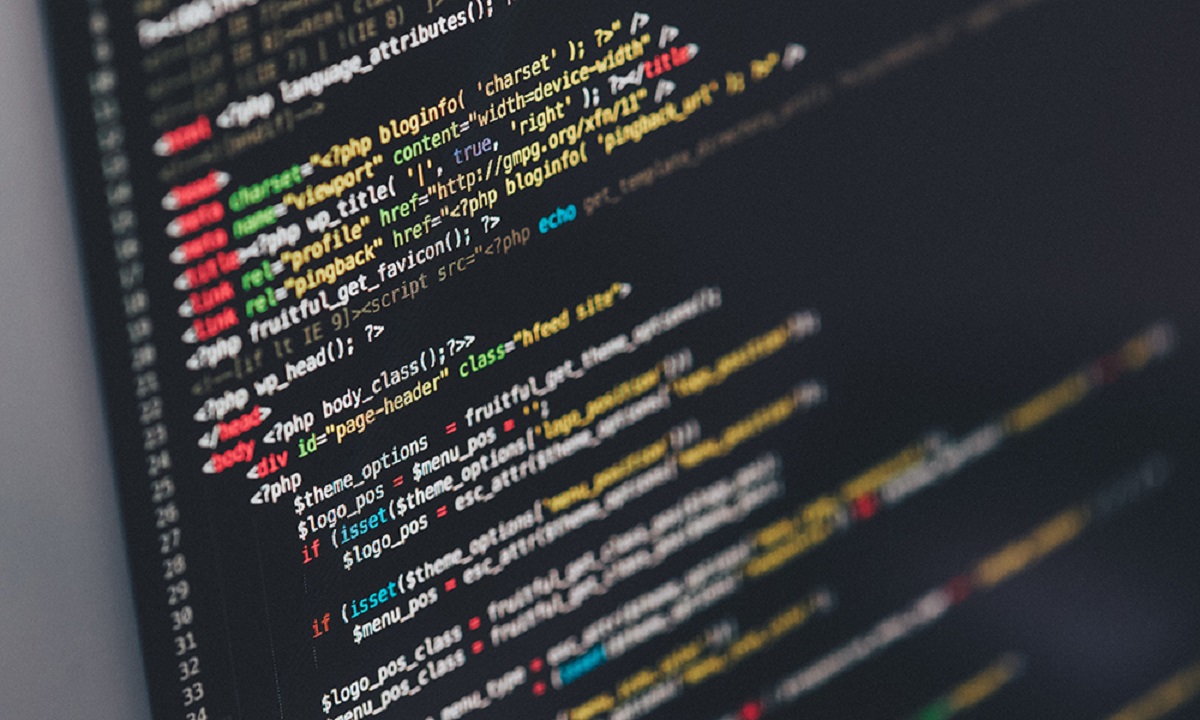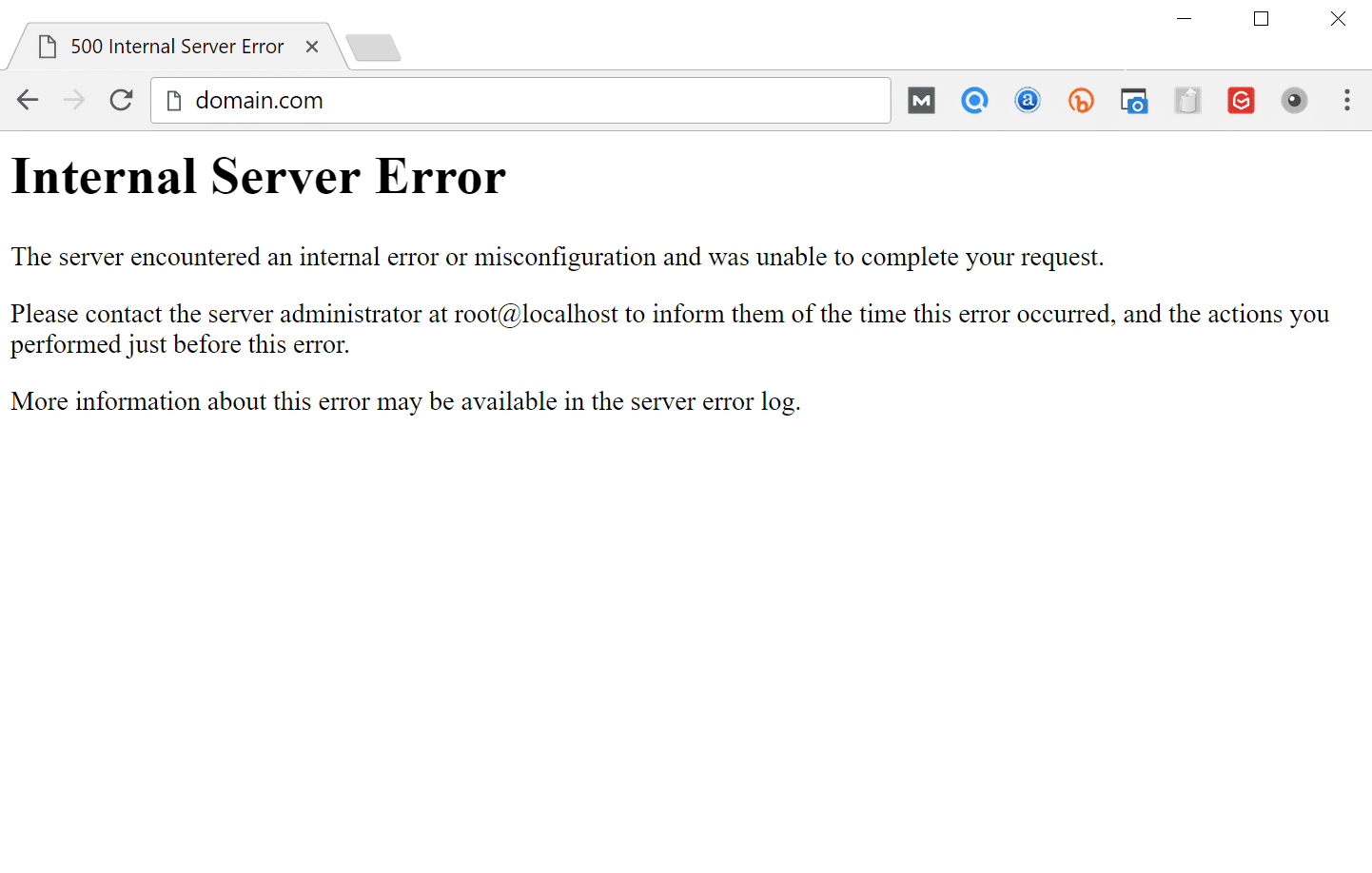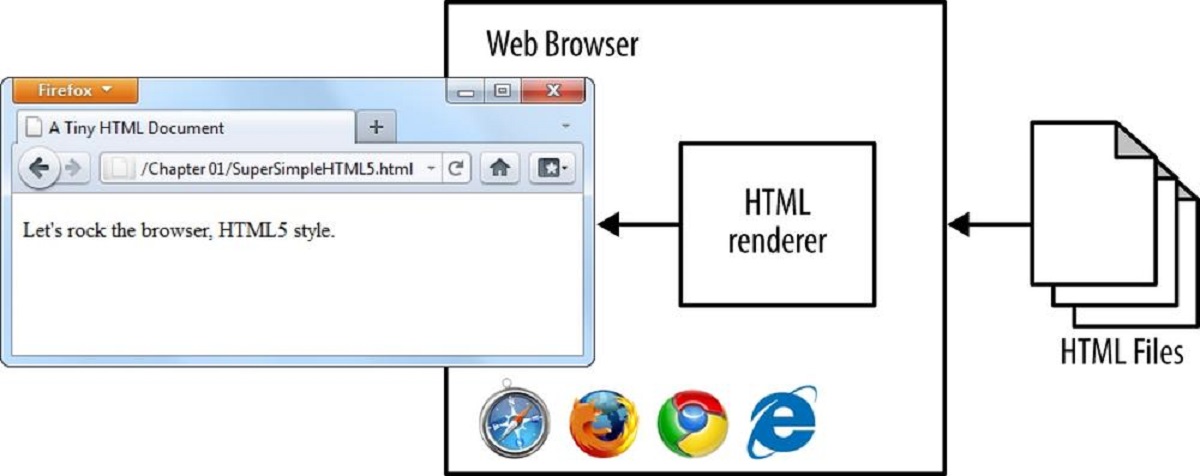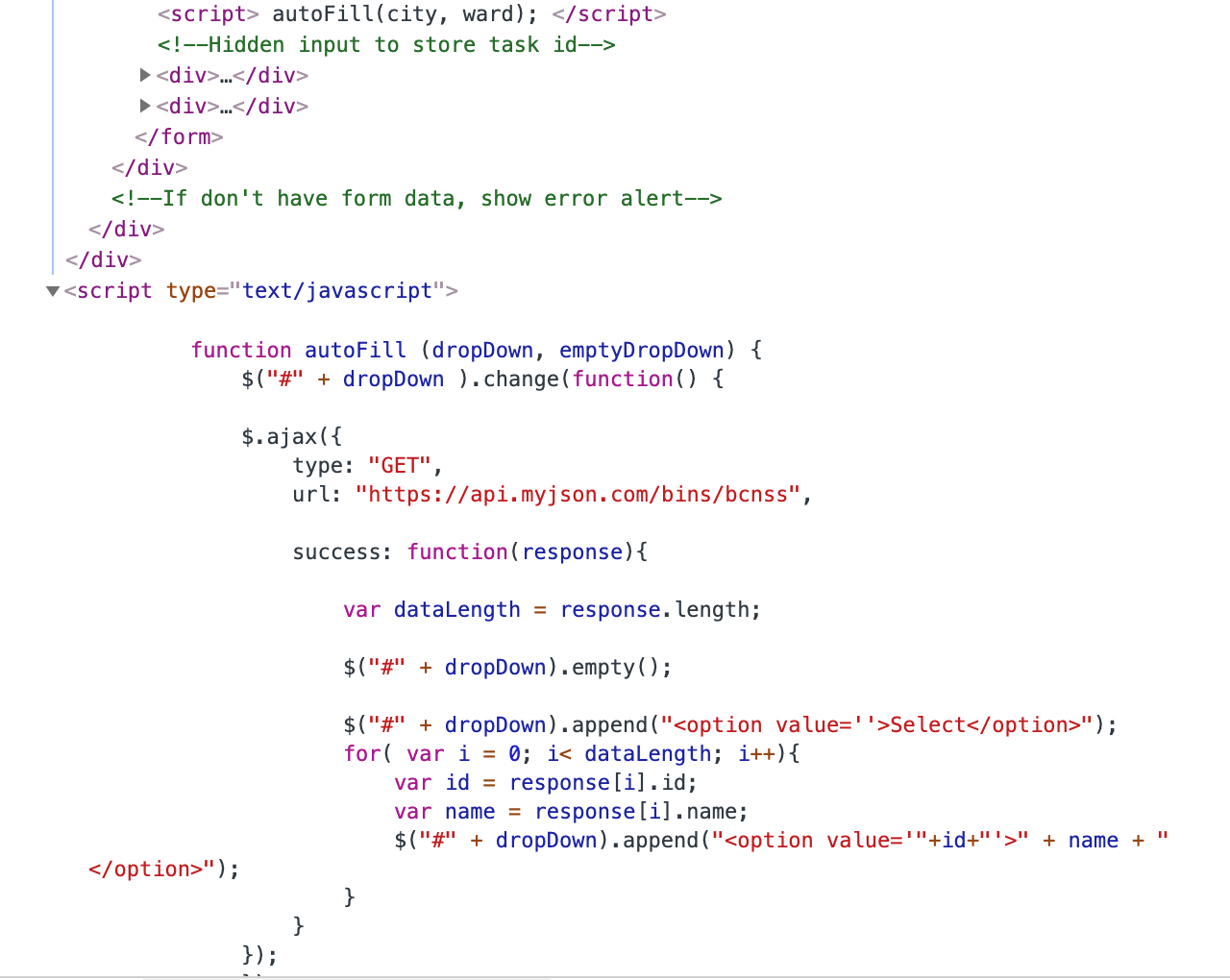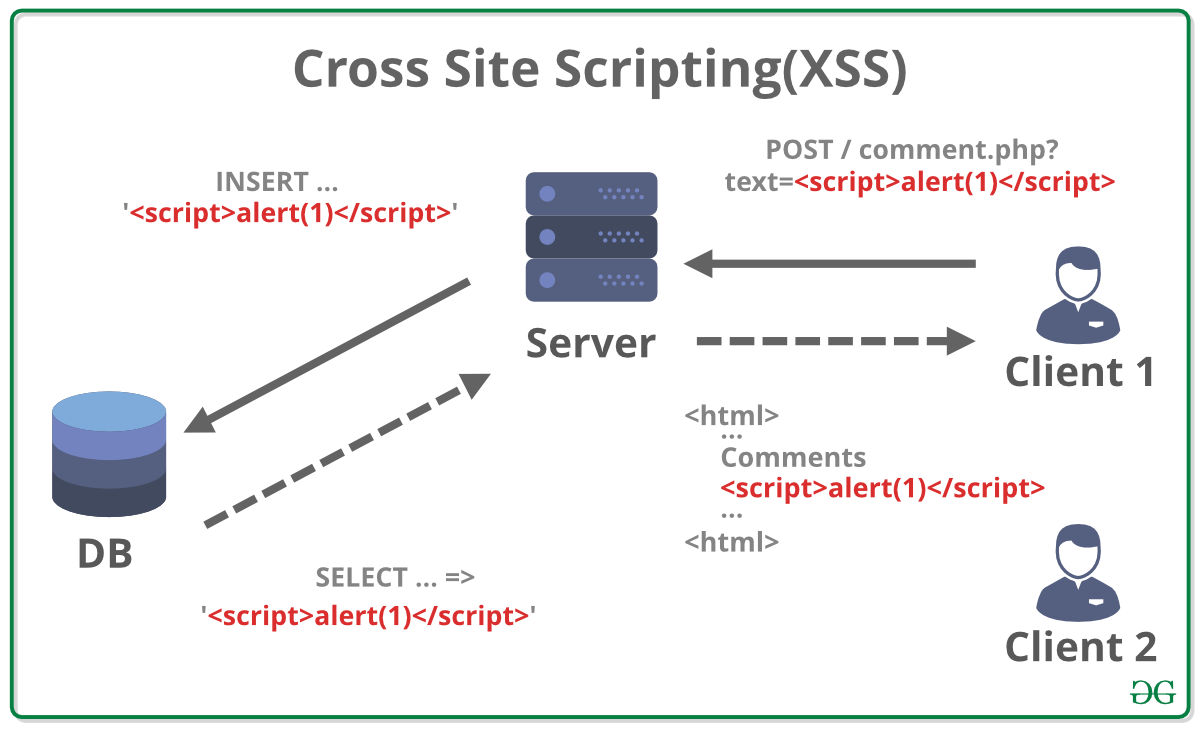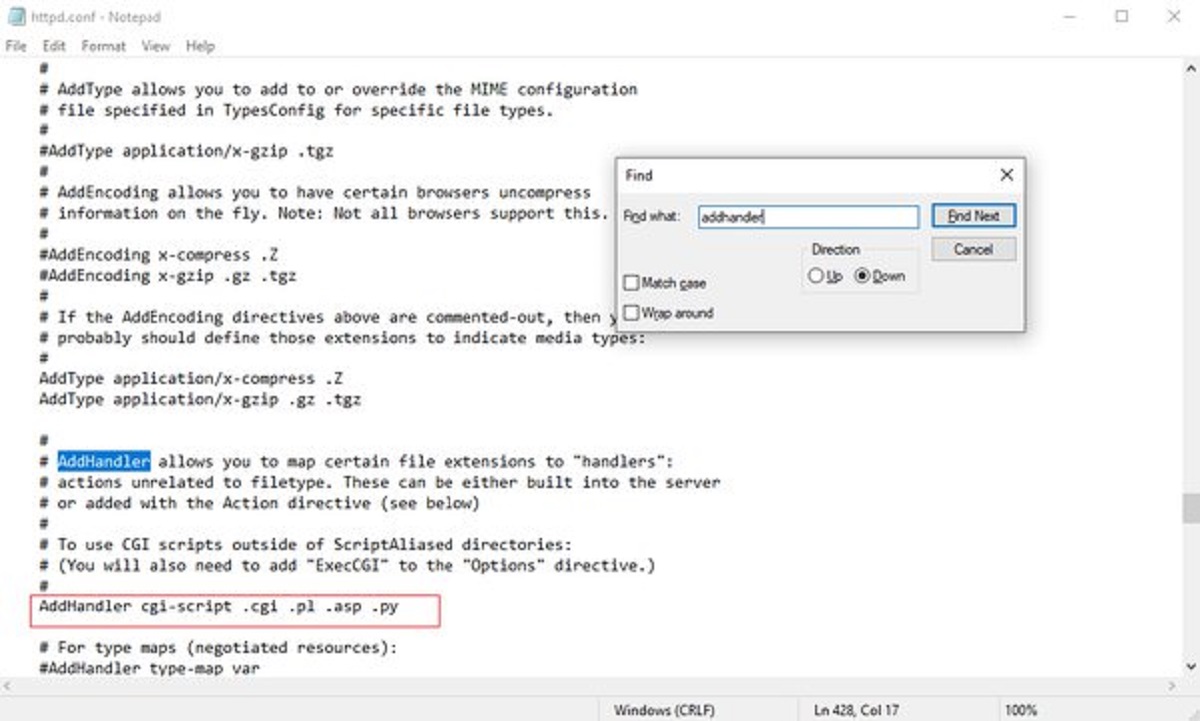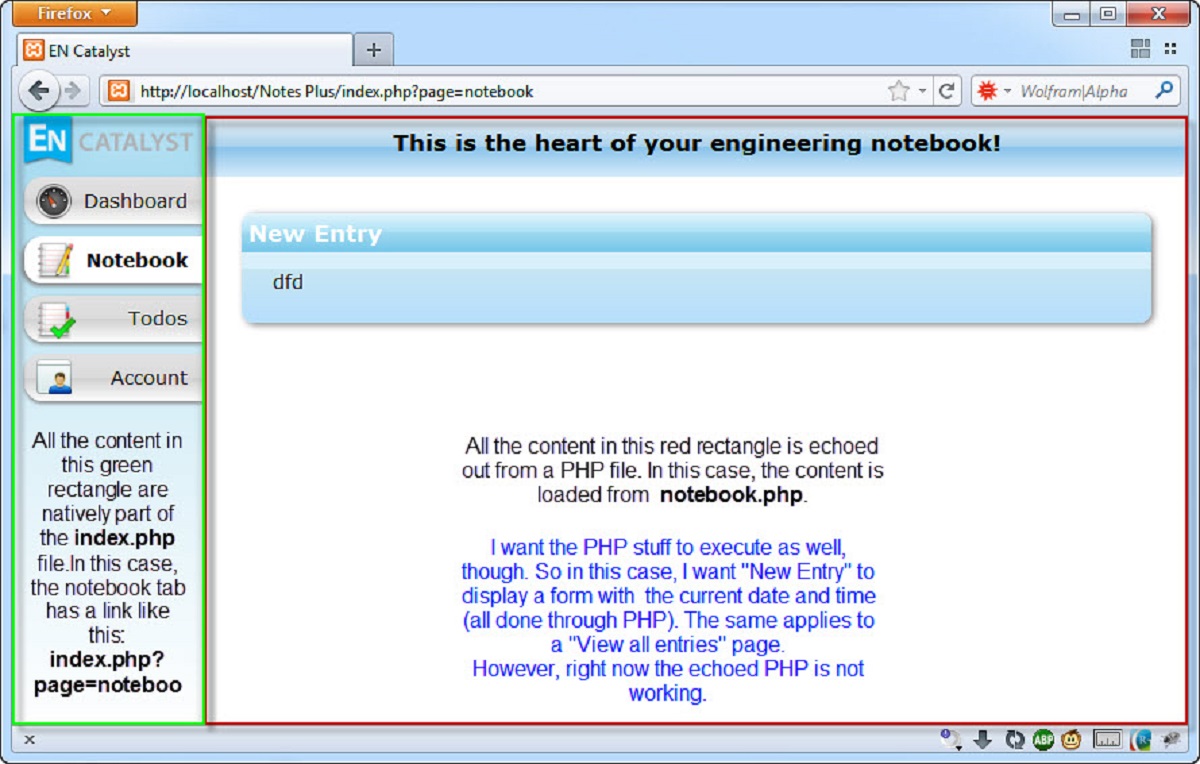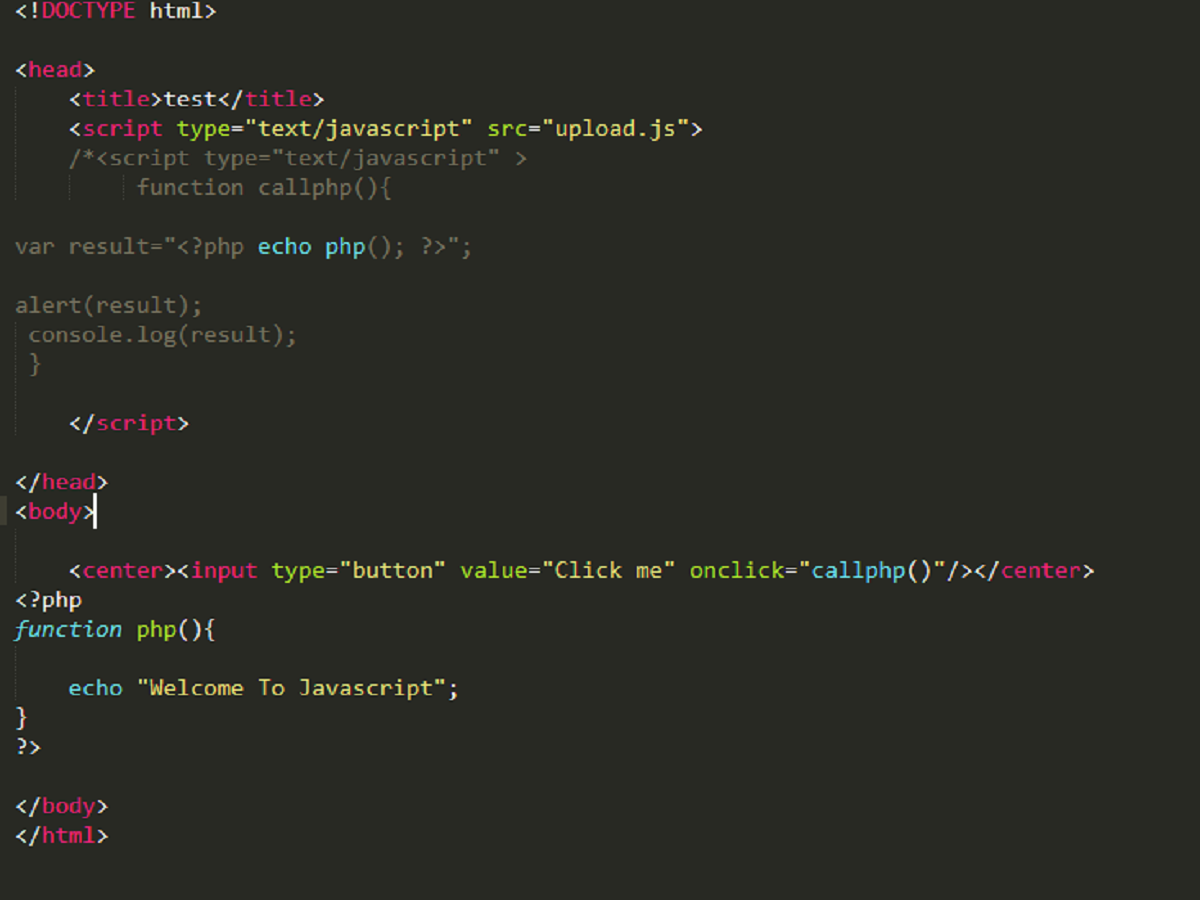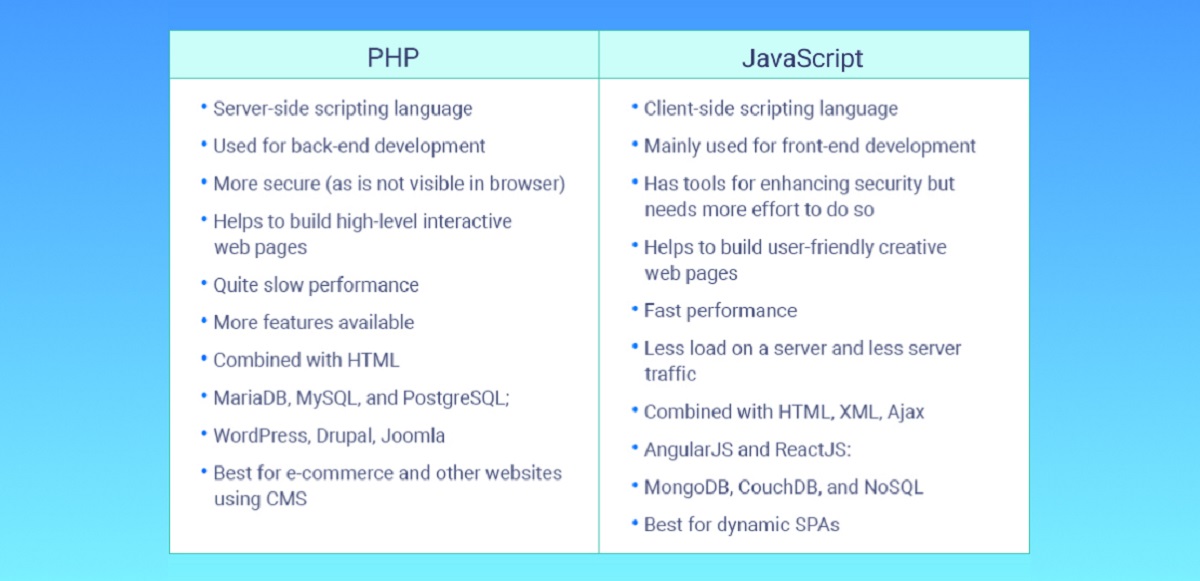Introduction
Welcome to the world of PHP scripts! In this digital age, where websites have become an integral part of our lives, PHP scripts play a crucial role in providing dynamic and interactive functionalities to web applications. Whether you are a web developer, designer, or simply a curious enthusiast, understanding what PHP scripts are and how they work can greatly enhance your ability to create powerful and efficient web experiences.
A PHP script is essentially a set of instructions written in the PHP programming language. PHP, which stands for Hypertext Preprocessor, is a server-side scripting language widely used for web development. Unlike traditional HTML files, which are static and do not allow for dynamic content, PHP scripts enable developers to create dynamic web pages that can interact with databases, process user input, generate dynamic content, and perform a multitude of other tasks.
How does a PHP script work? When a user requests a web page that contains a PHP script, the web server processes the PHP script on the server-side and generates an output, typically in HTML format, which is then sent back to the user’s web browser for display. This allows for dynamic content generation, making websites more interactive and personalized.
There are numerous benefits to using PHP scripts in web development. First and foremost, PHP is an open-source language, which means it is freely available and constantly evolving, thanks to a large and active community of developers. This ensures that PHP remains up-to-date with the latest technologies and best practices, making it a reliable and efficient choice for web development projects.
Furthermore, PHP scripts are easy to learn and write, even for beginners. With its simple and intuitive syntax, developers can quickly grasp the basics of PHP and start building dynamic web applications in no time. The vast collection of pre-built functions and frameworks available in the PHP ecosystem also makes development faster and more efficient by providing ready-made solutions for common tasks.
PHP scripts find applications in a wide range of web development scenarios. From creating simple contact forms and feedback submissions to developing complex e-commerce platforms and content management systems, PHP scripts can be used to build robust and scalable web applications. Its flexibility and compatibility with various operating systems and web servers make it a popular choice among developers worldwide.
In the next sections, we will delve deeper into the structure, features, and functionalities of PHP scripts. We will explore variables, control structures, and functions, providing you with a comprehensive understanding of how to write efficient and powerful PHP scripts. So, let’s get started and unlock the potential of PHP scripting!
Definition of PHP Script
Before diving into the intricacies of PHP scripting, let’s first establish a clear definition of what a PHP script is. As mentioned earlier, PHP stands for Hypertext Preprocessor, and it is a server-side scripting language used primarily for web development.
A PHP script is a set of instructions written in PHP code that is executed on the server-side. These scripts are embedded within HTML or other template files and are processed and interpreted by a web server with PHP support before being sent to the user’s web browser. This server-side processing allows PHP scripts to generate dynamic content, interact with databases, perform calculations, and handle various other web-related tasks.
PHP scripts can be used to create and manage a wide range of web applications, from simple blogs and websites to complex e-commerce platforms and enterprise-level systems. The flexibility and versatility of PHP scripting make it a popular choice among developers worldwide.
Unlike client-side scripting languages such as JavaScript, which are executed directly in the user’s web browser, PHP scripts are executed on the web server. This allows PHP to access the server’s resources, interact with databases, and perform various server-side operations.
PHP scripts are typically embedded within HTML files using special PHP tags. These tags, usually denoted by , indicate to the web server that the enclosed code should be processed as PHP. Any code outside of these tags is treated as regular HTML and is sent directly to the user’s web browser without processing.
One of the key advantages of PHP scripting is its vast collection of built-in functions and libraries. PHP provides a wide range of functions for string manipulation, file handling, database connectivity, and other common tasks required in web development. Additionally, there are numerous open-source PHP frameworks available that provide additional features and enhance productivity.
Overall, the definition of a PHP script revolves around its role as a server-side scripting language that enables the creation of dynamic and interactive web applications. PHP scripts allow developers to leverage the power of the server and provide personalized and dynamic content to users, making websites more engaging and functional.
How Does PHP Script Work?
Understanding how PHP scripts work is fundamental to harnessing the power of PHP in web development. When a user requests a web page that contains PHP code, the following steps take place to process and deliver the requested page:
- Web Server Receives the Request: The user makes a request for a web page by entering the URL or clicking on a link. This request is sent to the web server that hosts the website.
- Web Server identifies PHP Code: The web server recognizes that the requested page contains PHP code. This is typically done by checking for the .php file extension.
- PHP Interpreter Processes the Code: Once identified, the web server passes the PHP code to the PHP interpreter. The interpreter reads and executes the code line by line.
- Data Processing: The PHP interpreter processes the PHP code, performing operations such as accessing databases, manipulating data, and executing functions. This allows for the dynamic generation of content based on user input or other factors.
- HTML Generation: After processing the PHP code, the PHP interpreter generates HTML and other relevant content. This output is typically a combination of static HTML and dynamically generated content based on the PHP code logic.
- Delivery to the User’s Browser: The web server delivers the generated HTML and other relevant content back to the user’s web browser. The browser then renders this content, displaying the web page to the user.
It is important to note that the PHP code is executed on the server-side, which means that the user does not have access to the underlying code. The user only receives the generated output, which could be HTML, CSS, JavaScript, or any other web-compatible format.
PHP scripts can also interact with databases, making it possible to retrieve and store data dynamically. For example, a PHP script can retrieve user information from a database, process it, and display personalized content to the user.
Additionally, PHP scripts can handle user input through web forms. When a user submits a form, the PHP script can collect the submitted data, validate it, and perform actions based on the input. This makes PHP scripts an essential tool for developing interactive web applications.
Overall, the workings of PHP scripts involve a seamless interaction between the web server, the PHP interpreter, and the user’s web browser. This allows for the dynamic generation of web content and the creation of interactive and personalized web experiences.
Benefits of Using PHP Script
PHP scripting is widely utilized in web development due to its numerous benefits and advantages. Let’s explore some of the key reasons why developers choose to use PHP script:
- Easy to Learn and Use: PHP has a simple and intuitive syntax, making it relatively easy for developers to learn and start using quickly. Its C-like structure and familiar concepts make it accessible to beginners while providing powerful features for more advanced users.
- Open-Source and Community-Driven: PHP is an open-source language, which means it is freely available and constantly evolving. It benefits from a large and active community of developers who contribute to its growth and develop various libraries, frameworks, and resources to enhance productivity.
- Platform Independence: PHP is a cross-platform scripting language, meaning it can run on various operating systems, including Windows, Linux, macOS, and more. This allows developers to work on different environments without significant compatibility issues.
- Compatibility with Web Servers and Databases: PHP scripts are compatible with a wide range of web servers, such as Apache, Nginx, and Microsoft IIS. Additionally, PHP supports various database systems, including MySQL, PostgreSQL, and Oracle, making it versatile for handling data-driven web applications.
- Efficient Performance: PHP utilizes a modular architecture that enables faster processing and reduced load times. Its ability to handle a large number of concurrent connections efficiently makes it ideal for building high-performance applications.
- Wide Range of Built-in Functions and Libraries: PHP offers an extensive collection of built-in functions and libraries that provide ready-to-use solutions for common web development tasks. This simplifies and accelerates the development process, allowing developers to focus on application logic rather than reinventing the wheel.
- Integration with HTML and other Technologies: PHP scripts can be seamlessly integrated with HTML code, allowing developers to combine dynamic content generation with the presentation layer. Furthermore, PHP can work collaboratively with other technologies, such as JavaScript, CSS, and XML, enabling developers to create interactive and visually appealing web experiences.
- Scalability and Flexibility: PHP offers scalability, allowing applications to handle increasing amounts of traffic and data. It also provides flexibility, allowing developers to choose from various development approaches, such as procedural or object-oriented programming, based on their project requirements and coding preferences.
These benefits make PHP scripting a preferred choice for developers worldwide. Whether you are building a small personal website or a large-scale enterprise application, PHP’s simplicity, versatility, and robustness make it an excellent option to consider.
Popular Uses of PHP Script
PHP scripting is widely employed in various web development scenarios, making it one of the most popular languages for building dynamic and interactive websites and applications. Let’s explore some of the popular uses of PHP script:
- Content Management Systems (CMS): PHP is the backbone of many popular CMS platforms, such as WordPress, Joomla, and Drupal. These CMSs leverage PHP’s flexibility and extensive plugin ecosystem to enable users to create, publish, and manage digital content easily.
- E-commerce Websites: PHP provides developers with powerful tools to build robust and secure e-commerce platforms. With PHP, developers can create shopping carts, handle payment gateways, manage inventory, and deliver seamless shopping experiences to users.
- Forums and Social Networks: PHP scripting is often used to develop online communities and social networking platforms. Applications like phpBB and vBulletin, along with various social networking frameworks, utilize PHP to enable users to interact, share content, and connect with others.
- Web Forms and Data Processing: PHP scripts are commonly used to handle form submissions and process user input. Whether it’s a contact form, registration form, or survey, PHP enables developers to collect, validate, and process data, allowing for seamless user interactions.
- Dynamic Websites: PHP scripting is ideal for creating dynamic websites that display content personalized to individual users. By integrating PHP with databases, developers can retrieve and display dynamic content based on user preferences, search queries, or other factors.
- API Development: PHP’s ability to handle network communications and data processing makes it suitable for creating APIs (Application Programming Interfaces). APIs built with PHP can provide access to functionality, data, and services, allowing developers to extend their applications or enable third-party integrations.
- Web Services: PHP can be used to build web services, which are software components that provide functionality over the internet. Web services enable communication between different systems, allowing developers to integrate their applications with external services or create a service-oriented architecture.
- Web Scraping: PHP’s ability to handle HTTP requests, process HTML, and manipulate data make it a popular choice for web scraping. Developers can write PHP scripts to extract data from websites, perform data analysis, or automate repetitive tasks, providing valuable insights or automating workflows.
These are just a few examples of the diverse range of applications that PHP scripting can handle. The versatility and flexibility of PHP make it a go-to language for various web development needs, empowering developers to create innovative and functional solutions.
Basic Structure of a PHP Script
Understanding the basic structure of a PHP script is essential to start writing PHP code effectively. Let’s explore the fundamental elements that make up a PHP script:
- Opening PHP Tag: Every PHP script begins with an opening PHP tag, usually
- PHP Code: The PHP code resides between the opening and closing PHP tags. This code can include variables, functions, control structures, database queries, and various other PHP programming constructs.
- HTML Content: In many cases, PHP scripts generate HTML content. To include HTML within a PHP script, you can simply write the HTML markup directly. The PHP interpreter will treat it as regular text and pass it back to the user’s browser as part of the generated output.
- Inline PHP Code in HTML: Alternatively, you can embed PHP code within HTML using PHP tags . This allows you to dynamically generate HTML content based on variables and conditions within the PHP code.
- Closing PHP Tag: While not mandatory, it is considered good practice to close PHP files with a closing tag, ?>. This is particularly important when combining PHP code with other languages like HTML or JavaScript to avoid parsing errors.
Here’s an example that demonstrates the basic structure of a PHP script:
php
Welcome, !
You are years old.
In the example above, the script begins with the opening PHP tag and
are used to display a personalized greeting and age based on the variables’ values. Finally, the script ends with the closing PHP tag ?>.
Keep in mind that this is just a simple example, and PHP offers much more complex and powerful features. As you progress in your PHP journey, you’ll discover the ability to include external files, define functions and classes, and leverage the vast array of built-in PHP functions and libraries.
Understanding the basic structure of a PHP script is the foundation for building more complex and dynamic web applications. With this knowledge, you can now start writing PHP code and explore the full potential of PHP in web development.
Variables and Data Types in PHP Script
Variables play a crucial role in PHP scripting by storing and manipulating data. In PHP, variables are containers that hold values of different data types. Understanding variables and data types is essential for effective PHP development. Let’s explore this concept further:
Variables:
In PHP, variables are created by using the $ symbol followed by the variable name. They can store various types of data, including numbers, strings, booleans, arrays, and objects. Variables in PHP are dynamically typed, meaning they can change their data type based on the value assigned to them.
Here’s an example:
php
$name = “John Doe”;
$age = 25;
$isStudent = true;
In the example above, we have three variables: $name, $age, and $isStudent. $name stores a string value, $age stores an integer value, and $isStudent stores a boolean value.
Data Types:
PHP supports several data types, including:
- Strings: Strings are sequences of characters enclosed in single or double quotes. They can represent text or numeric values.
- Integers: Integers are whole numbers without decimal points.
- Floats: Floats, also known as floating-point numbers, are numbers with decimal points or exponential notation.
- Boolean: Booleans represent true or false values.
- Arrays: Arrays store multiple values in a single variable. PHP provides different types of arrays, such as indexed arrays, associative arrays, and multidimensional arrays.
- Objects: Objects are instances of classes that contain properties and methods.
- Null: Null represents the absence of a value.
PHP also provides various built-in functions to perform type casting and conversion between different data types as needed. This flexibility allows developers to manipulate and transform data efficiently in PHP scripts.
Here’s an example that demonstrates the usage of different data types:
php
$name = “Alice”;
$age = 29;
$height = 1.65;
$isStudent = true;
$skills = array(“PHP”, “HTML”, “CSS”);
$person = new stdClass();
$person->name = “Bob”;
$person->age = 32;
$person->isEmployed = true;
$salary = null;
In the example above, we have variables that represent different data types. $name stores a string, $age stores an integer, $height stores a float, $isStudent stores a boolean, $skills stores an array, $person stores an object, and $salary is initialized to null.
Understanding variables and data types in PHP provides a solid foundation for writing dynamic and data-driven scripts. By utilizing the appropriate data types and manipulating variables effectively, you can create robust and flexible PHP applications.
Control Structures in PHP Script
Control structures in PHP allow developers to control the flow of execution in their scripts based on certain conditions or criteria. These structures include decision-making statements, loops, and branching mechanisms. Understanding and effectively utilizing control structures is essential for creating flexible and powerful PHP scripts. Let’s explore some of the key control structures in PHP:
Conditional Statements:
Conditional statements in PHP allow you to execute specific blocks of code based on certain conditions. The most commonly used conditional statement is the if statement, which evaluates a condition and executes the code block if the condition is true. PHP also provides variations of the if statement, such as the if-else statement and the switch statement, which allow for more complex branching logic.
php
$age = 25;
if ($age >= 18) {
echo “You are eligible to vote.”;
} else {
echo “You are not eligible to vote.”;
}
The example above demonstrates an if-else statement that determines if a person is eligible to vote based on their age. If the condition ($age >= 18) is true, the first code block is executed, otherwise, the code block within the else statement is executed.
Loops:
Loops in PHP enable repetitive execution of a block of code until a certain condition is met. There are different types of loops available in PHP, including the while loop, do-while loop, and for loop.
php
$counter = 1;
while ($counter <= 5) {
echo "Count: {$counter}
“;
$counter++;
}
The example above illustrates a while loop that iterates until the condition ($counter <= 5) becomes false. The $counter variable is incremented within the loop, ensuring that the loop eventually terminates.
Control Flow Statements:
Control flow statements in PHP alter the normal flow of execution within a script. They include statements like break, continue, and return.
php
$values = array(1, 2, 3, 4, 5);
foreach ($values as $value) {
if ($value == 3) {
continue;
}
echo $value . “
“;
if ($value == 4) {
break;
}
}
In the example above, the continue statement skips the iteration when $value is equal to 3, and the break statement terminates the loop when $value reaches 4.
By effectively utilizing control structures, developers can build dynamic and responsive PHP scripts. These control structures enable the execution of different code blocks based on conditions, repetitive execution of code with loops, and the ability to change the flow of execution using control flow statements.
Functions and Classes in PHP Script
Functions and classes are fundamental building blocks in PHP scripting, enabling developers to organize and encapsulate code for reusability and modularity. By utilizing functions and classes, developers can create efficient and maintainable PHP scripts. Let’s explore these concepts further:
Functions:
In PHP, a function is a self-contained block of code that performs a specific task. Functions allow you to break down your code into smaller, more manageable pieces, making it easier to read, debug, and maintain. You can define your own custom functions or use built-in PHP functions. Here’s an example of a custom function:
php
function greet($name) {
echo “Hello, ” . $name . “!”;
}
greet(“John”);
In the example above, we define a function called “greet” that takes a parameter $name. The function echoes a greeting message that includes the provided name. We then call the function and pass it the argument “John”, resulting in the output “Hello, John!”.
Classes and Objects:
Classes are the blueprint or template for creating objects in PHP. A class defines the properties and behaviors that an object of that class can have. Objects are instances of classes that have their own state (properties) and behavior (methods). Classes and objects enable developers to organize code into reusable and logical structures. Here’s an example of a class:
php
class Person {
public $name;
public $age;
public function greet() {
echo “Hello, my name is ” . $this->name . ” and I am ” . $this->age . ” years old.”;
}
}
$person = new Person();
$person->name = “Alice”;
$person->age = 25;
$person->greet();
In the example above, we define a class called “Person” with two properties: $name and $age. The class also has a method called “greet” that outputs a greeting message using the values of the properties. We create an instance of the class ($person), set the values of its properties, and call the “greet” method.
Inheritance and Polymorphism:
PHP supports inheritance, allowing classes to inherit properties and methods from parent classes. Inheritance promotes code reuse and enables the creation of more specialized classes. Additionally, PHP supports polymorphism, allowing objects of different classes to be treated as instances of a common parent class, providing flexibility and extensibility in code design.
By utilizing functions and classes, developers can create organized, reusable, and modular PHP scripts. Functions enable the encapsulation of code logic, while classes and objects provide a structured and object-oriented approach to PHP development, enhancing code flexibility and maintainability.
Conclusion
PHP scripting is a powerful tool for building dynamic and interactive web applications. Through this article, we have explored the fundamental concepts of PHP script, including its definition, how it works, and the benefits it offers. We have also delved into key aspects such as variables and data types, control structures, and the use of functions and classes in PHP scripting.
PHP’s simplicity, flexibility, and extensive community support make it an ideal choice for developers, whether they are beginners or seasoned professionals. With PHP, developers can create efficient and scalable web applications, ranging from simple websites to complex content management systems and e-commerce platforms.
Understanding the basic structure of a PHP script is essential for writing clean and organized code. By utilizing variables and data types, developers can store and manipulate data effectively. Control structures allow for conditional execution and repetitive tasks, providing powerful control over the flow of execution within a script.
Furthermore, functions and classes play a crucial role in PHP script development, allowing for modular and reusable code. Functions help break down complex tasks into smaller, manageable units, while classes and objects facilitate the creation of structured and object-oriented code, enhancing maintainability and flexibility.
By harnessing the power of PHP script, developers can create robust and dynamic web applications that enhance user experiences and deliver personalized content. The continuous evolution of PHP and its vast ecosystem of frameworks, libraries, and resources ensure that PHP remains a valuable and reliable tool for web development.
Whether you are just starting your journey in PHP scripting or looking to expand your skills further, the knowledge gained from this article will serve as a solid foundation. Embrace the versatility of PHP and explore the various possibilities it offers in creating captivating and interactive web applications.







